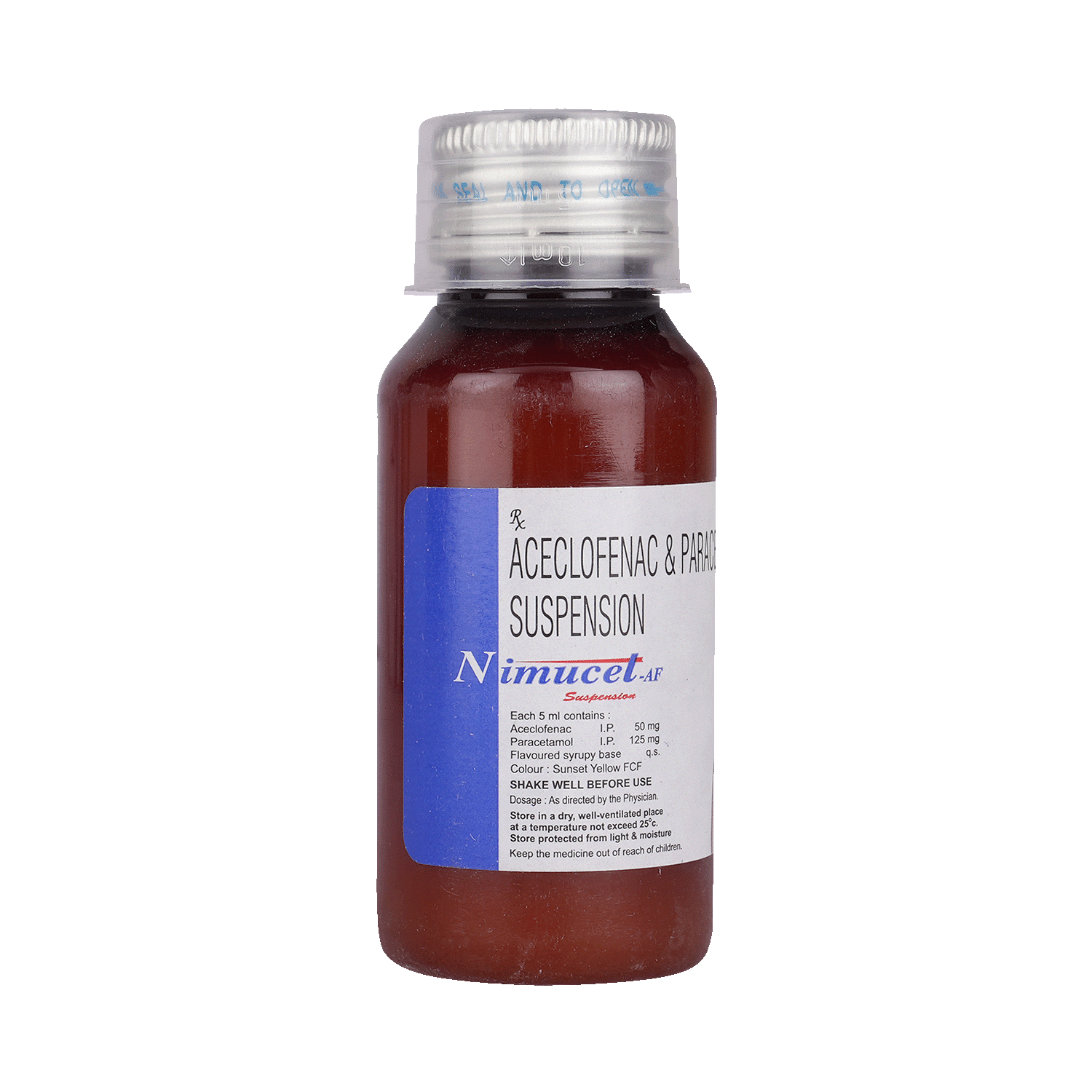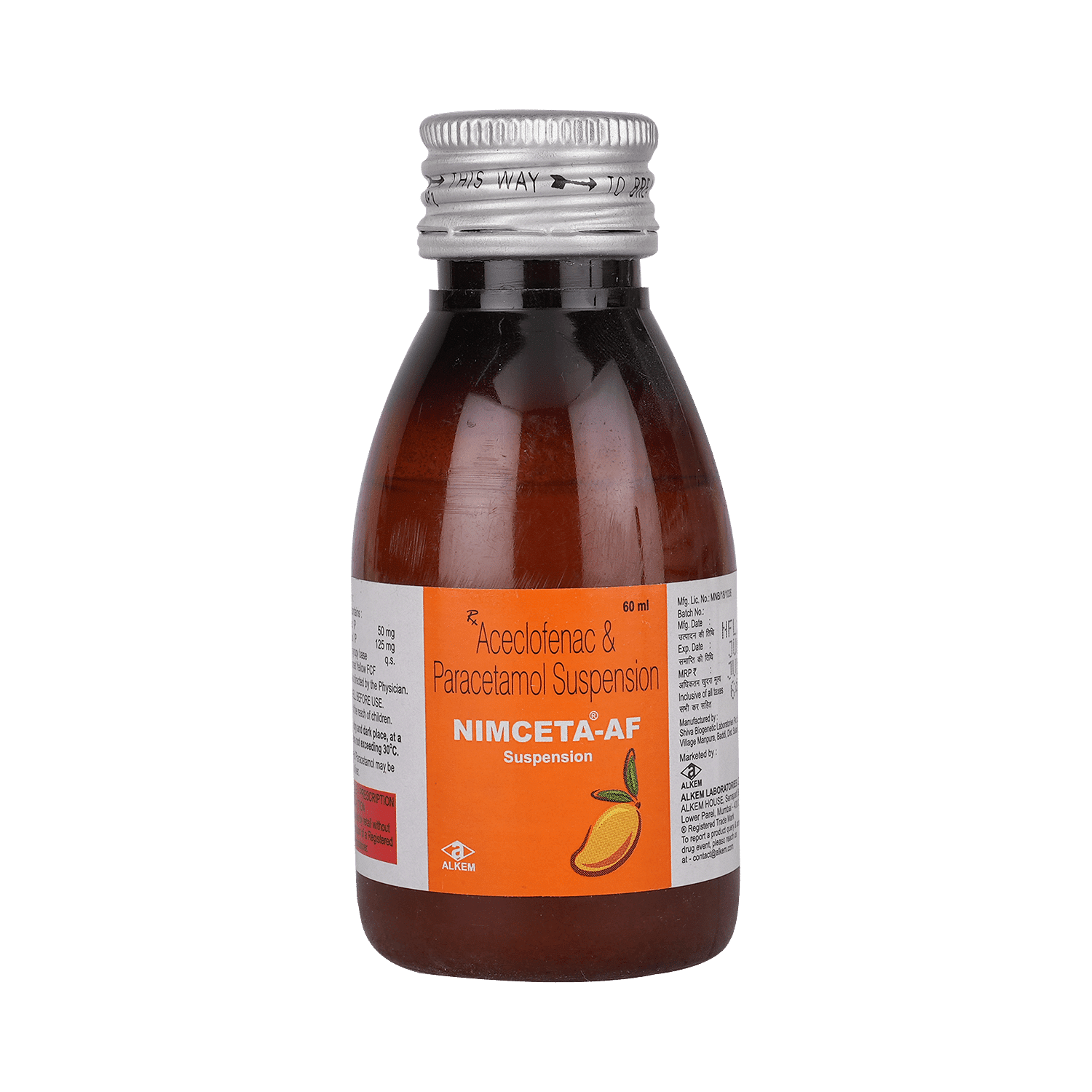
Raflofen-P Suspension
Manufacturer
Raviolis Healthcare
Salt Composition
Aceclofenac (50mg) + Paracetamol (125mg)
Key Information
Short Description
Raflofen-P Suspension helps lower body temperature (fever) and reduce pain and inflammation (redness and swelling) both in infants and children.
Dosage Form
Suspension
Introduction
Raflofen-P Suspension is a medication that helps to lower body temperature (fever) and reduce pain and inflammation (redness and swelling) in infants and children. It is a suspension that is taken orally and is available in a variety of strengths.
Directions for Use
Give this medicine after food to avoid abdominal discomfort in your child. Maintain a log of your child's temperature. If you do not see any improvement, contact your child's doctor for advice.
Safety Information
Side Effects
No common side effects listed.
How it works
Raflofen-P Suspension comprises two active ingredients: Aceclofenac and Paracetamol. These medicines work by blocking the action of chemical messengers responsible for pain, fever, and inflammation (redness and swelling).
Quick Tips
Give this medicine after food to avoid abdominal discomfort in your child. Maintain a log of your child's temperature. If you do not see any improvement, contact your child's doctor for advice. Keep a track of the dose and the frequency in which you have given this medicine to your child. This will help prevent overdosing. Practice self-care tips like: giving plenty of fluids to your child to ensure proper body hydration, giving your child a balanced diet, encouraging your child to have optimum sleep since sick children get tired soon and getting plenty of rest helps them recover faster. Stop the medicine and consult your child's doctor in case your child exhibits allergic rash or stomach pain soon after taking this medicine.
Related Medicines

Nimucet-AF Suspension Mango

Aceclotp-P 50mg/125mg Suspension

Acirace P Suspension

Nimceta AF 50 mg/125 mg Suspension

Acloriz-P Suspension

Albiflam P Suspension

Acenov P 50mg/125mg Suspension

Cyclofit Suspension

Actibull Suspension

Nanceclo P 50mg/125mg Suspension
Frequently asked questions
Can I adjust the dose of Raflofen-P Suspension for my child based on their illness severity?
No, it's not recommended to alter the dose without consulting a doctor. Increasing the dose may lead to toxicity, while decreasing it could cause symptoms to recur.
How much Raflofen-P Suspension should I give to my child?
Your child's doctor will prescribe the correct dose based on their condition and body weight; stick to the prescribed dosing schedule for safe and effective recovery.
How should I store Raflofen-P Suspension?
Store at room temperature, in a dry place away from direct heat and light. Keep all medications out of children's reach and sight to avoid accidental intake.
Can I give the same dose of Raflofen-P Suspension to all children?
No, the doctor decides the appropriate dose based on a child's age and body weight; the dose may change as they grow older. Never give any dose without consulting a doctor.
When will my child feel better after taking Raflofen-P Suspension?
Your child may need to take this medicine for several days or weeks, depending on their condition. Give the medication in the prescribed dose and frequency; symptoms should improve, but consult a doctor if they persist.
Are there any serious side effects of Raflofen-P Suspension?
Although generally well-tolerated, your child may experience intolerable episodes like persistent vomiting, swelling, decreased urine frequency, or severe allergic reactions; seek immediate medical attention if this occurs.
Are there specific contraindications for using Raflofen-P Suspension?
This medicine is not suitable for patients with known allergies to its components or other painkillers (NSAIDs), stomach ulcers, heart failure, high blood pressure, liver disease, or kidney issues.


